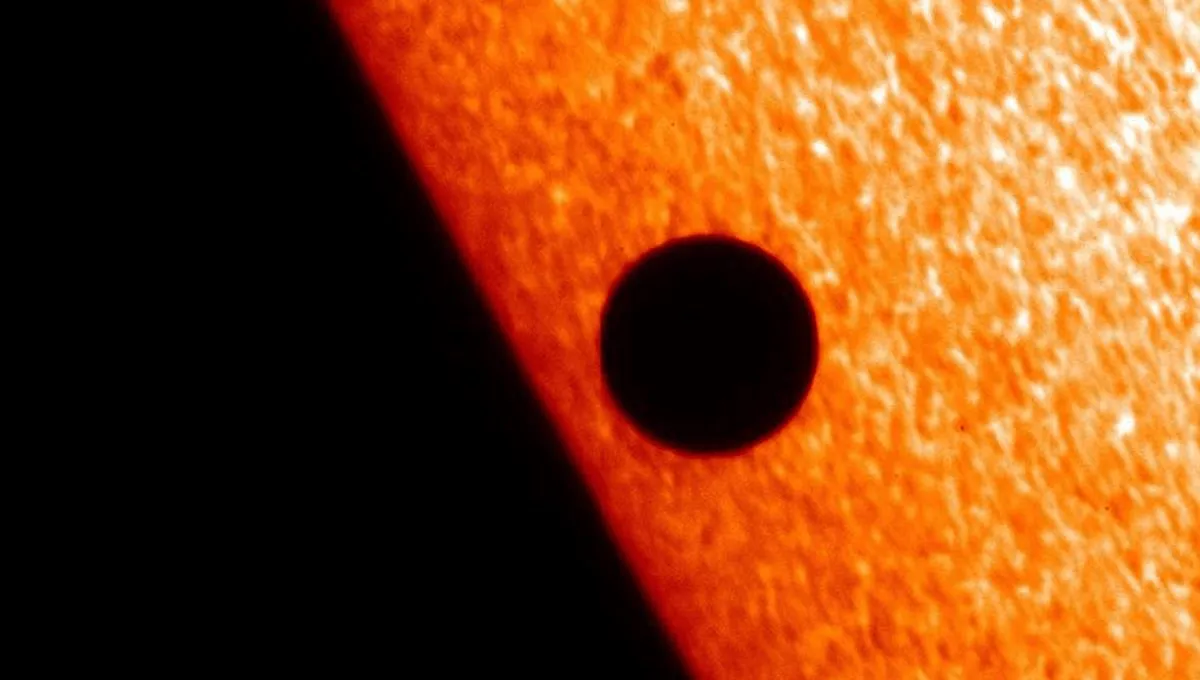
On July 1, astronomers from the Asteroid Terrestrial-impact Last Alert System (ATLAS) made a groundbreaking discovery by spotting an object traveling through our Solar System. This celestial visitor marks our third confirmed interstellar object, following the notable 1I/'Oumuamua and 2I/Borisov. Initial observations confirmed that this object is indeed a comet, specifically designated as 3I/ATLAS, and it has piqued the interest of scientists due to its unusual characteristics.
3I/ATLAS exhibits intriguing chemistry and polarization, alongside a rare feature known as an anti-tail. Unlike typical comets, this anti-tail is not merely an optical illusion but a genuine physical phenomenon. As the comet continues its trajectory, it has moved out of the view of Earth-based telescopes and is currently situated behind the Sun. On October 21, the comet will reach a solar conjunction, positioning it directly behind the Sun as observed from Earth.
Although Earth-based observations are hindered by the Sun’s glare, researchers have managed to gather data on 3I/ATLAS from orbiters around Mars and are hopeful for additional insights from the vicinity of Jupiter. As the comet approaches the Sun, it will reach its perihelion, the closest point to our star. During this phase, comets typically heat up, causing them to release volatile gases and dust, a phenomenon known as outgassing. Notably, 3I/ATLAS began outgassing when it was approximately 6.4 astronomical units (AU) from the Sun, with one AU representing the distance between the Earth and the Sun.
As scientists prepare for further observations, the discovery has led to some controversial theories. Notably, Avi Loeb, a Harvard professor, has raised eyebrows with claims suggesting that 3I/ATLAS may not be a natural object. He posits the possibility that it could be of alien technological origin, a stance that has triggered speculation and concern among conspiracy theorists. Loeb theorizes that if the object is indeed artificial, it might execute an Oberth maneuver—using the Sun's gravity to alter its trajectory when it is out of sight.
Despite the sensational theories, many scientists remain skeptical. Tom Statler, NASA’s lead scientist for Solar System small bodies, commented on the situation, stating, “It looks like a comet. It does comet things. It very, very strongly resembles, in just about every way, the comets that we know.” Statler emphasizes that while 3I/ATLAS has some unique properties, the overwhelming evidence supports its classification as a natural comet.
As 3I/ATLAS approaches its perihelion on October 29, all eyes will be on this interstellar guest. Loeb suggests that if the object were to execute a maneuver, we could observe unexpected changes in its trajectory and mass. However, the more likely scenario is that it will continue on its path out of the Solar System, albeit with the potential for minor alterations due to solar radiation. While the prospect of 3I/ATLAS being an alien spacecraft remains a low-probability hypothesis, it serves as a reminder of the vast mysteries that still exist beyond our planet.
In conclusion, the discovery of 3I/ATLAS is a significant event in the field of astronomy, providing an opportunity to deepen our understanding of interstellar objects. As we await further observations, the comet's journey will undoubtedly continue to captivate scientists and enthusiasts alike.